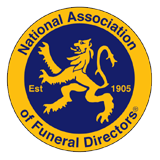Cremations are a popular funeral choice for the people of West Sussex but some express concern about the ethics and practice of cremation – a concern which may be based on religious beliefs or a matter of personal principle. We hope these notes will reassure them and dispel some of the popular misconceptions about cremation-based funerals.

About cremation
How many people use cremation today in Great Britain?
Between 80 – 85% of all funerals are now cremations.
Is cremation more expensive than burial?
No. The cost of a grave is much higher than the fee for cremation, unless in a churchyard. The funeral director’s charges are much the same for both services. An additional charge for cremation is incurred by requiring two doctors’ fees. When the Coroner is not involved, these doctors fill in the necessary certificates. With burials, there are also the on-going costs such as headstones and grave care.
Are there any religious groups which forbid cremation?
Yes. Cremation is forbidden by Orthodox Jews and Muslims. All Christian denominations including the Roman Catholic Church allow cremation. Cremation is the normal method for Sikhs, Hindus, Parsees and Buddhists.
Which religious ceremony can I have with cremation?
The service for burial and cremation is the same apart from the form of committal sentences. The service can take place in one’s own church or chapel followed by a short committal at the crematorium chapel. We will arrange a minister who will be happy to discuss the form of the service with you. All types of music are available at the crematorium from the singing of hymns to the playing of personal CDs or MP3s.
Must there be a religious ceremony with cremation?
No. This is not obligatory. A humanist ceremony can be conducted with the cremation or there may be none at all. On a few occasions, a memorial service is conducted separately from the cremation ceremony.
What would you recommend in relation to leaving an item of jewellery on a body?
The best advice is that it should be removed after death unless it is intended that it should be cremated. Once the coffin has been taken to the crematorium, it is not possible to recover such items.
What about precious and other metals?
The temperature a cremator operates at (between 800 C and 1000 C) is such that metals are fused with other materials so that they are not recognisable. The cremation Code of Practice states that any metallic material resulting from a cremation should be disposed of in accordance with the instructions of the cremation authority and recommends that this should be buried at depth within the crematorium grounds.
What happens to the handles and other coffin fittings?
Crematorium regulations require that all fittings shall be of combustible material and normally the handles and name plate are made of hard plastic. Ferrous nails and screws do not burn and stay with the remains until they are withdrawn by means of a magnetic field.
What happens at the crematorium on the day of the funeral?
The coffin is usually brought into the chapel followed by the mourners in procession. While it is being placed on the catafalque, the mourners take their seats and the service proceeds. At the committal, the coffin may be obscured from view by means of curtains closing, withdrawal through a gateway or it may be lowered from the catafalque to a committal room below. The most common method is curtains closing. At the end of the service, the mourners leave the chapel to view floral tributes.
What happens to the coffin after the committal?
It is withdrawn into a committal room where the name plate is checked. The coffin is then labelled with a card prepared by the crematorium. This card will stay with the body until the final disposal of the ashes.
Does the cremation take place immediately or are the coffins stored until a number are ready to be cremated?
Wherever possible, the cremation will follow immediately after the service. The Code of Cremation Practice requires that the cremation shall take place on the same day as the service.
Is the coffin cremated with the body?
Yes. The Code of Practice requires that nothing must be removed from the coffin after it has been received from the chapel and so it must be placed in the cremator exactly as it is.
Is more than one coffin cremated at one time in a cremator?
No. The only exception permitted to this rule is in the case of mother and baby or twin children when the next of kin request that the two be cremated together.
Can relatives witness the committal of the coffin to the cremator?
Yes. Normally two persons are permitted to attend and the Superintendent should be advised in advance of this wish.
How do I know I will get the right cremation ashes?
A cremation chamber will only accept one coffin and all the remains are withdrawn before the cremator is used again. From cremation, through preparation, to being placed in an urn, the remains are accompanied by the identification card previously mentioned.
If I want to know more about cremation and perhaps inspect a crematorium, how should I go about it?
Telephone or visit your local crematorium and discuss the matter with the Superintendent there. They will be pleased to answer your queries and conduct you through the crematorium to see how it is operated. NB Worthing Crematorium: There is a Garden of Remembrance but no provision for a memorial. There is a Book of Remembrance and details of this are sent to next of kin shortly after the service.
What does the preparation entail?
When the cremation is complete, the remains are withdrawn onto a cooling tray. When cool, the ferrous metals are removed by magnetism and the remains are packed into a machine which reduces them to a fine ash.
What happens to the cremated remains?
In 80% of cases, the cremated remains are strewn or buried in the Gardens of Remembrance at the crematorium. A few crematoria have niches where urns may be placed. The alternative is to remove the cremated remains for disposal elsewhere. This could be a family grave or by scattering at a favourite spot. Some cemeteries have sections especially for ashes burial.
What do the prepared ashes consist of?
The remains are now totally bone ash and weigh usually between 4lb and 6lb. They are in a state which will permit them to be strewn.
What are the gardens of remembrance at a crematorium?
The gardens of remembrance consist of areas set aside for the disposal of cremated remains. Remains may be buried but no individual memorials are permitted in such gardens to mark the spot. This is because the areas are used again and again over the years and will be for as long as the crematorium is in operation.
If the cremated remains are strewn on the ground, what happens to them?
As the highest biochemical activity exists on the surface of the soil, this action as well as the weather quickly breaks down the ash to form part of the earth.
What can I do if I wish to bury the cremated remains and have a headstone?
The majority of cemeteries make provision for the burial of cremated remains. One would have to check what each cemetery offers.
What memorials are possible at the crematorium?
Permanent forms of memorial vary at each crematorium. The most common is the Book of Remembrance. Like a diary, one enters the name of the deceased on a particular date; this could be a birthday or the date of the death. Each day the entries for that date are on display. Some crematoria allow wall plaques. At others, one can dedicate a rose bush. Some accept donations for such items as seats, stained glass windows etc. where an inscription may be permitted. It is important to check with us the facilities on offer at each crematorium. This can avoid later disappointment.
Are there local cemetery facilities for the burial of ashes?
Yes. Durrington cemetery has a section specifically for ashes burial. For further information, please consult your funeral director.
Can I keep the cremated remains if I wish or must I dispose of them?
You may do what you wish with the remains and may keep them with you, if you like.
How can I ensure that I am cremated when I die?
Clear instructions in writing should be given to the person who will be responsible for your funeral when you die. Such instructions are not binding in law so you should ensure that the person instructed is someone who is likely to carry out your wishes. The final decision will rest with your executors.
Arrange a funeral





